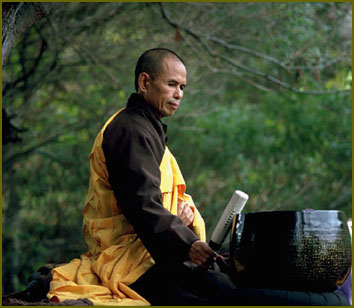Introducing Sarah Martin, co-founder of saigon om
/WHY YOGA: Yoga brings me home to my body so I can enjoy life in the present moment.
HOW I LIVE MY PRACTICE: As I embrace the art of mindful living, my daily life has become my practice. By following my breath and having a gentle smile, I'm able to bring peace and joy into everything that I do, both on and off the yoga mat.
WHERE I AM MOST CHALLENGED BY MY PRACTICE: My over-thinking mind.
THE ONE THING I CAN’T LIVE WITHOUT: Mindfulness. It helps me take care of my over-thinking mind and strong emotions. My daily mantra is "trust the breath" and not the mind.
THE BOOK I KEEP ON MY BED SIDE TABLE: 'The Heart of the Buddha's Teachings' by my mindfulness teacher Thich Nhat Hanh.
HOW I HAVE FUN OFF MY MAT: Traveling the world to teach and learn. My partner, Hang, and I are very blessed to be on this mindful path and sharing it with others. In between our trainings and retreats we visit Plum Village Monasteries in North America, Asia and Australia to practice with the monks and nuns. We also regularly visit Bali and Thailand to fill ourselves up on yoga.
WHAT I KNOW FOR SURE: Being alive is a miracle and everything around me is a gift of life.
WHAT I AM COMMITTED TO: Deepening my mindfulness practice and sharing this healing and joyful path with others.
WHAT I SHARE IN MY TEACHING: My peace and good mindful words to remind students how amazing life is.
HOMETOWN: Melbourne, Australia
EDUCATION / OTHER CERTIFICATIONS: 15 years of experience as a massage therapist & Reiki practitioner. I now enjoy offering massage & Reiki trainings and bringing these healing modalities into my yoga classes.
ANYTHING ELSE YOU WANT TO ADD:
My partner, Hang, and I founded 'saigon om'- a holistic wellness school offering Yoga Alliance 200-hour yoga & mindfulness teacher training, yoga & mindfulness retreats, and training in Reiki, massage, Tai Chi & Qi Gong in Canada, Australia and South East Asia.
We follow the teachings of Thich Nhat Hanh, Buddhist monk & peace activist, and the Plum Village spiritual community. We regularly visit Plum Village Monastery to deepen our mindfulness practice.
Committed to our mindfulness path, we are currently practicing towards ordination of the “Order of Interbeing”, which is a community of monastics and lay people who have committed to living their lives in accord with the Fourteen Mindfulness Trainings, a concrete embodiment of the teachings of the Buddha for living simply, compassionately, and joyfully in our modern world.































